2021 Nest Box Report
by Tim Burris, Wildlife Management Coordinator
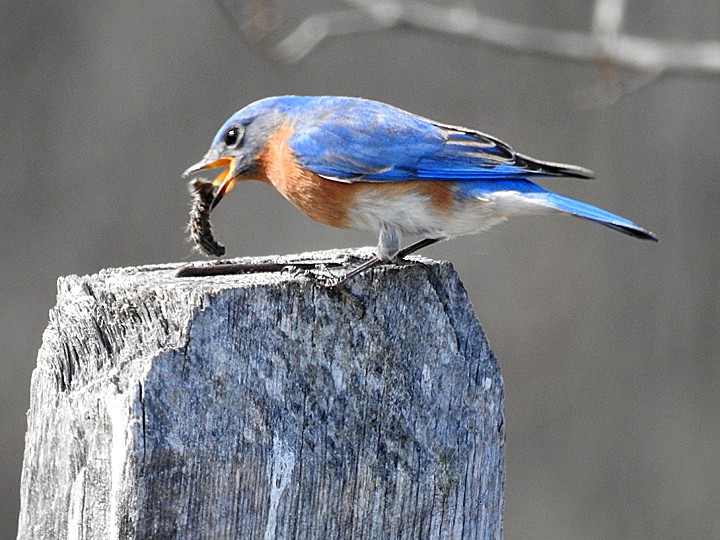
Photo by Carole Mebus.
Time to look back at the 2021 Nest Box season. I often interchange the terms nest boxes with Bluebird boxes. Trying to help Eastern Bluebird populations rebound was what spurred millions of people to build nest boxes. We now realize how other species take advantage of nest boxes, which imitate cavities in trees. That was certainly the case with this year’s report.
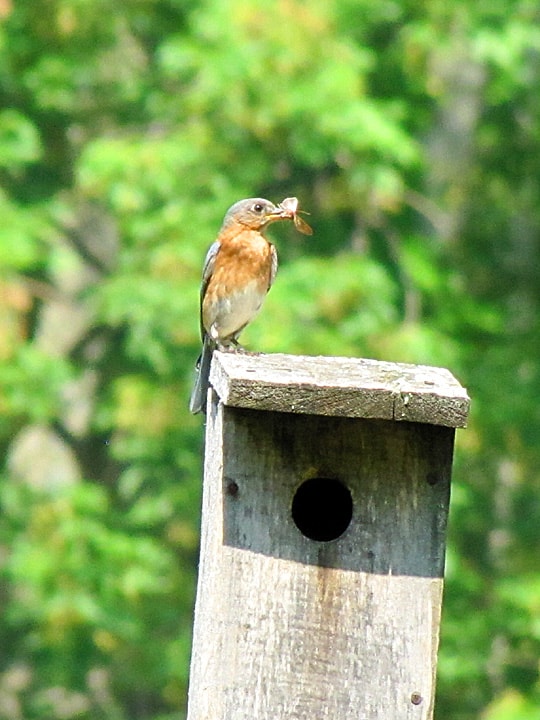
Photo by Carole Mebus.
I had reports from fifteen different preserves. We had 464 boxes monitored last year. It is a funny statistic, but 378 of those boxes were used by birds. I put up more boxes than I expect to get used, because I know multiple species may use boxes. An 81% use rate is good.
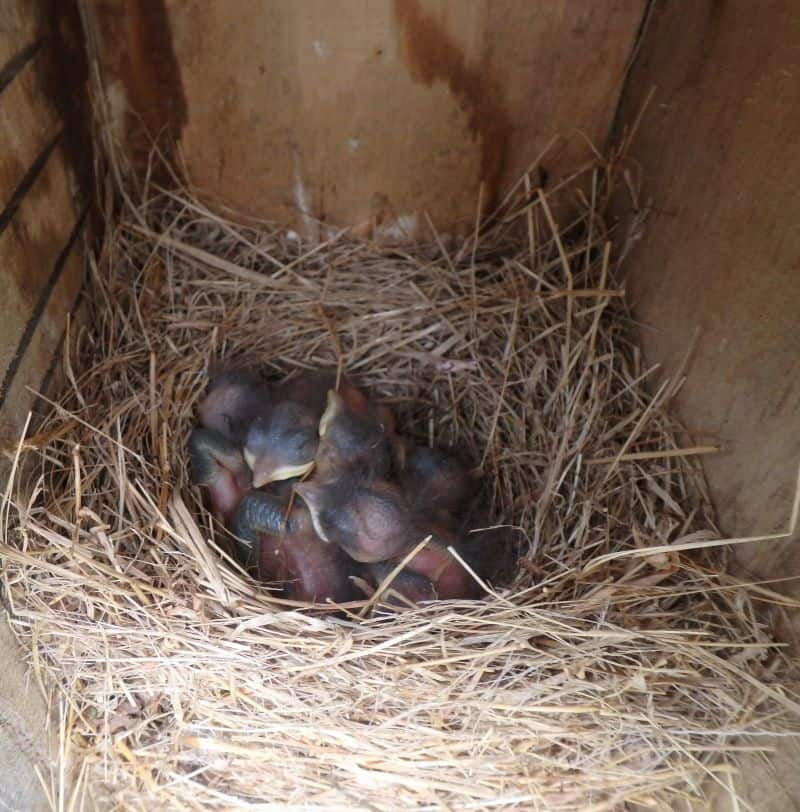
Baby Bluebirds. Photo by Tim Burris.
Bluebirds nested in 180 boxes across Natural Lands preserves. That resulted in 642 Eastern Bluebird fledglings! That is pretty exciting. My colleague, Lee Shull, had 180 baby bluebirds leave his 51 boxes at Reineman Preserve. This was a new record for Lee. Bryn Coed Preserve had 87 fledglings leave its boxes last year.
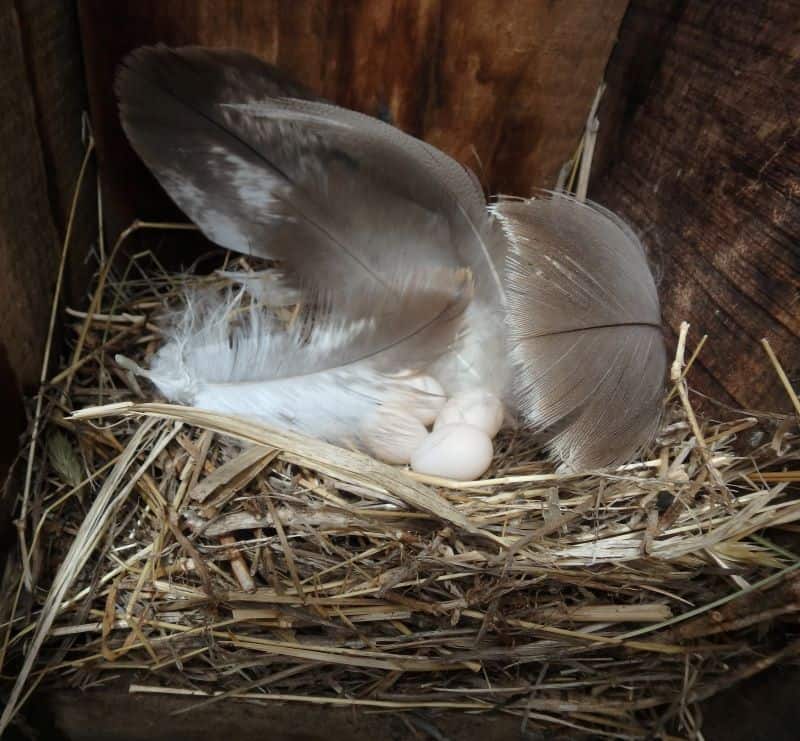
A Tree Swallow nest with four eggs. Photo by Tim Burris.
Tree Swallows are another bird species adapted to nesting in boxes designed for Bluebirds. A lot of our preserves have switched management from agriculture to grass fields and wildflower meadows. These habitats, along with water, are ideal for Tree Swallows. These birds love to skim above the vegetation or water’s surface catching insects on the fly. Last year we had 189 boxes used by Tree Swallows with 655 babies fledging out. ChesLen Preserve has done a banner job of installing new boxes and recruiting monitors. ChesLen has 85 boxes and 44 were used by Tree Swallows. ChesLen had the highest Tree Swallow fledgling rate with 185. (Reineman had 114.)
Binky Lee Preserve topped the list for House Wrens with 43 nests and 182 fledglings.
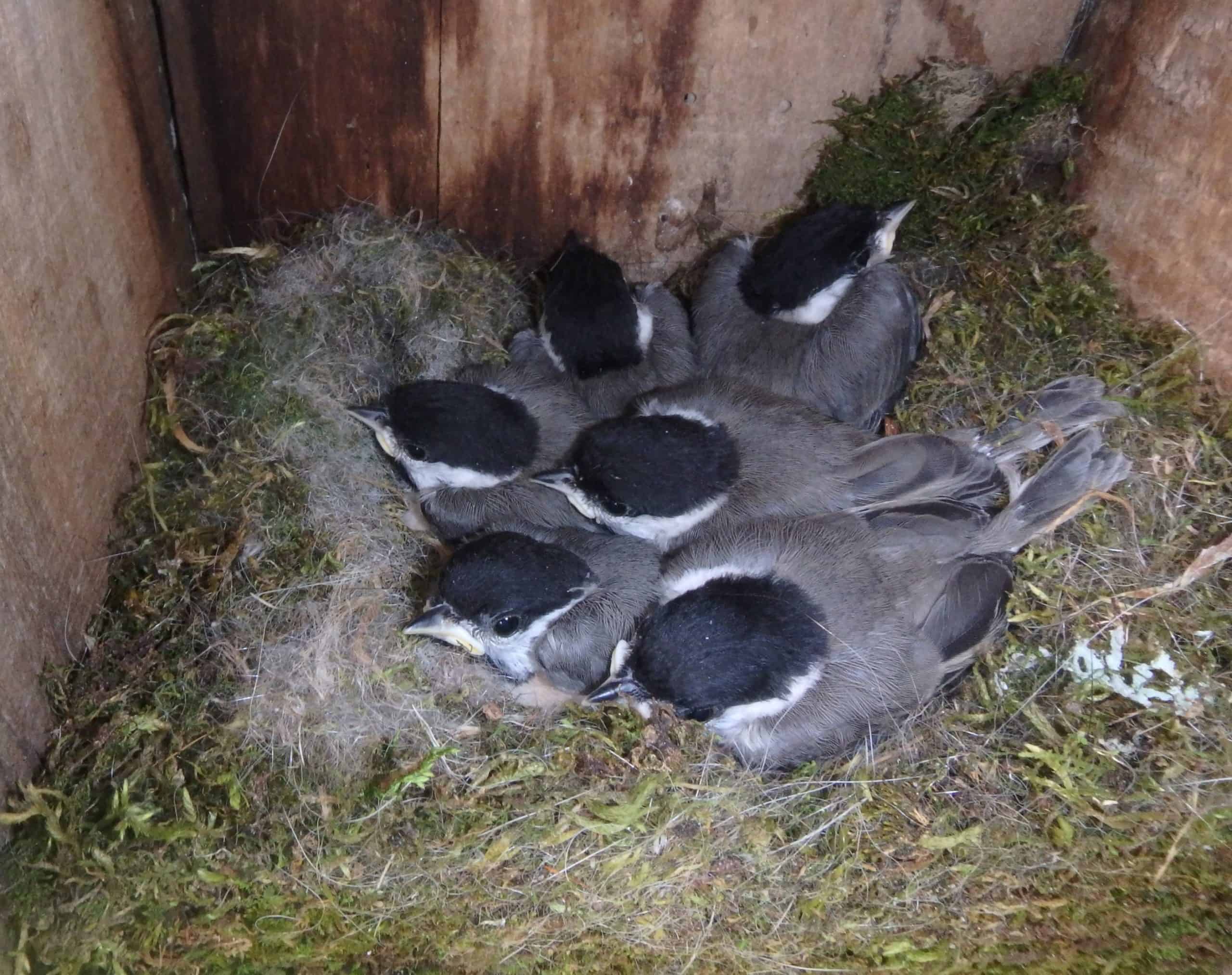
Chickadee fledglings about to leave the nest box. Photo by Tim Burris.
There were 9 boxes used by chickadees (Carolina, Black-capped, and hybrids combined) with 33 fledging out. Mariton had the most with 4 nests and 21 fledglings. I remember when it was very rare to find chickadees nesting in boxes. This species has really adapted over time.
Gwynedd Preserve had 17 Carolina Wrens fledge out of their boxes. I had Carolina Wrens nest this year for the first time in several years, but none laid eggs.
Finally, a hat nod to the monitor at ChesLen that keeps track of Wood Duck boxes. Twelve Woodies left one of those boxes.
Some other interesting notes about Natural Lands’ nest boxes. Saunders Woods Preserve recorded the earliest nest building activity by bluebirds on March 22, 2021. Each year, I encourage monitors to start checking their boxes early. Most bluebirds get serious in April, but there are usually a few that start earlier. It is better to make sure that the nest boxes are clean and ready for those early birds. In fact, I made my first check of boxes in the snow last week.
This year a few monitors had issues with nest predation and exposure. I wrote a blog a few weeks back about wet springs being hard on Wild Turkeys. Bluebirds have similar challenges. I didn’t have exposure losses this year, but have in past springs.
Knowing that bluebirds (or any bird species) fledged out of the boxes you are monitoring is such a thrill. So, I congratulate and thank all the people that scheduled time each week to hike around a preserve, check boxes, and keep detailed records. Most of Natural Lands’ nest boxes are monitored by the wonderful Force of Nature volunteers. A few get monitored by preserve staff. I have been monitoring Mariton’s nest boxes for 30 years, but have almost 40 years’ experience monitoring nest boxes. My colleague, Lee Shull, has an impressive monitoring history also.
